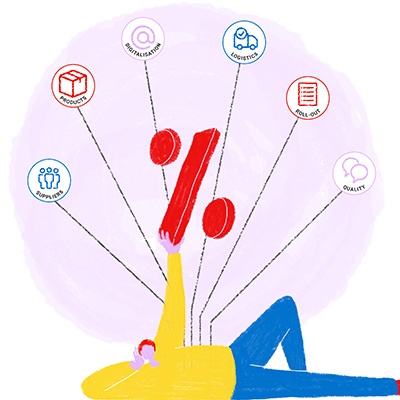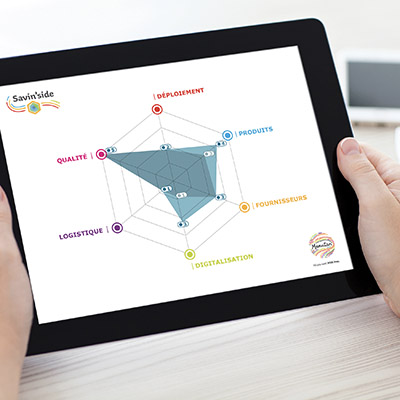For the purchasing department, the satisfaction of internal clients, i.e. all the business departments within the company, is essential. This issue has a direct influence on the observance of purchasing processes and procedures put in place, and more broadly on their own performance. But what tools are available to measure this satisfaction and improve the results? Décision Achats suggests taking advantage of the conventional satisfaction questionnaire.
Internal client satisfaction, enhancing companies' competitiveness
Internal client satisfaction is a core challenge for the Purchasing Department, especially when it comes to indirect purchases. Finally, purchasing, and more specifically this type of purchasing, concerns all of a company's employees and directly contributes to their quality of life at work, as well as their health, safety and own performance.
In an ideal world, a virtual circle may be established: internal clients who are satisfied with their purchasing experience observe the purchasing processes and procedures put in place, which enables the Purchasing Department to manage its strategy better to attain its goals, and therefore the company to more broadly gain competitiveness.
However, to reach this ideal situation, the journey is long. A lack of communication and misunderstandings are common in companies and purchasing/internal client relations are no exception.
Step 1: identify and measure KPIs
As the saying goes 'if you can't measure it, you can't improve it'. To guarantee internal client satisfaction, the Purchasing Department must therefore start by defining key performance indicators and measuring them. These may be related to users' purchasing experience (e.g. the response time, the number of offers available, etc.) as well as the company's strategy (e.g. number of local suppliers, number of eco-friendly products, etc.).
To assess these indicators, most experts interviewed by Décision Achats recommend using satisfaction surveys once a year and/or at the end of the project. Here are a few good practices to remember:
- Test an initial version of this satisfaction questionnaire with a small committee representing various departments, then deploy it with all the internal clients.
- If possible, organise this satisfaction survey in person to create a connection.
- In parallel, have the purchasing team carry out a self-assessment to identify any discrepancies.
To not place too much demand on their colleagues, the purchasing department can also assess their satisfaction by measuring another type of indicator, such as for example the number of projects where purchasing teams are involved upstream, the number of requests received, etc.
Step 2: communicate!
For this approach to be a success, Purchasing Departments must above all invest in communication, with both internal clients and their own teams.
All the more so within the framework of a satisfaction survey, you must explain the objectives clearly and highlight the benefits that all the stakeholders will draw from it. Only on this condition will they be committed to the project and really get involved. Once all the results have been analysed and the areas for improvement and action plan been properly identified, it is important once again to inform the participants and purchasing teams of them. This will encourage the former to renew the experience in the future and the latter to implement the corrective actions necessary to improve.
Finally, measuring internal client satisfaction and adopting an ongoing improvement approach are a first step for the purchasing department to position itself as a real business partner. Then you must go further by building a relationship of trust and cooperation between the Purchasing Departments and the other business departments.









